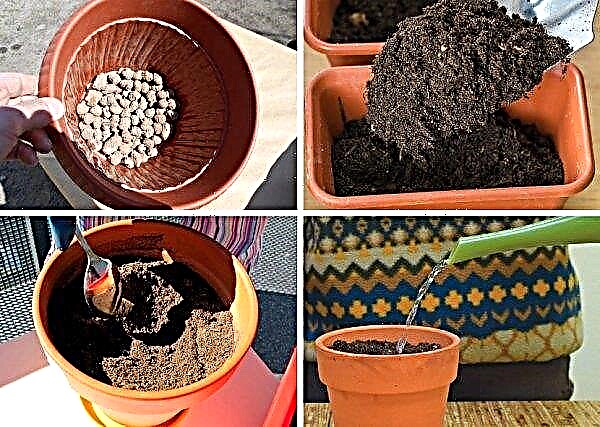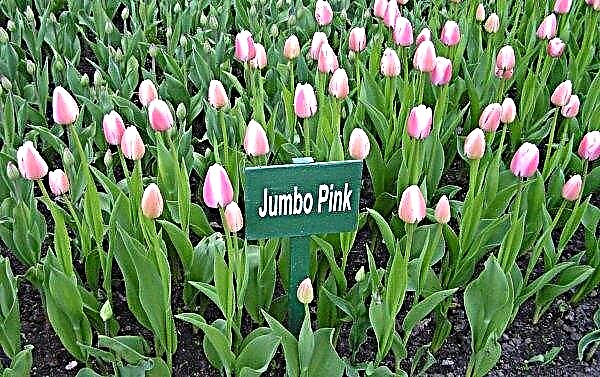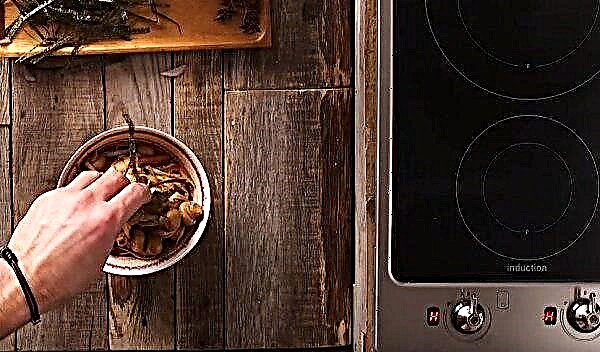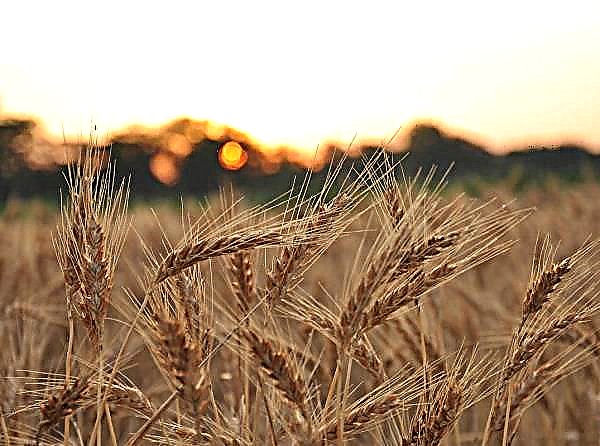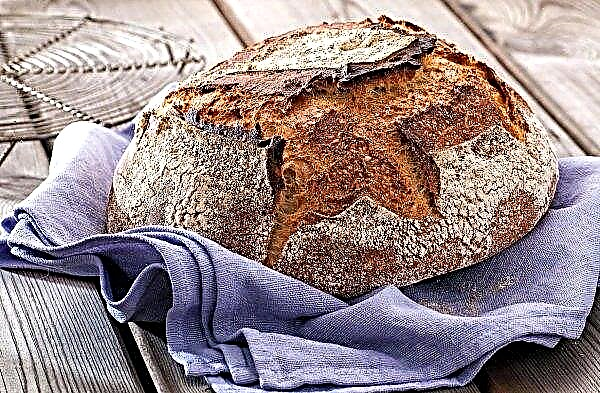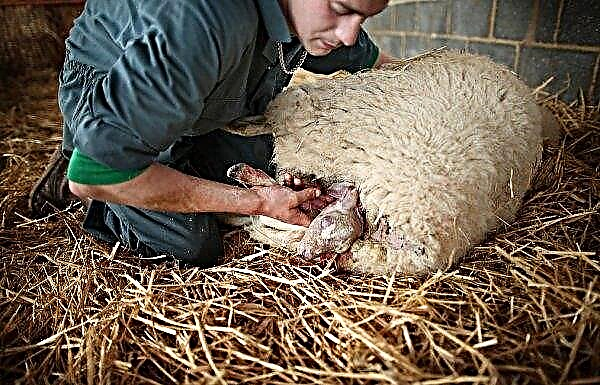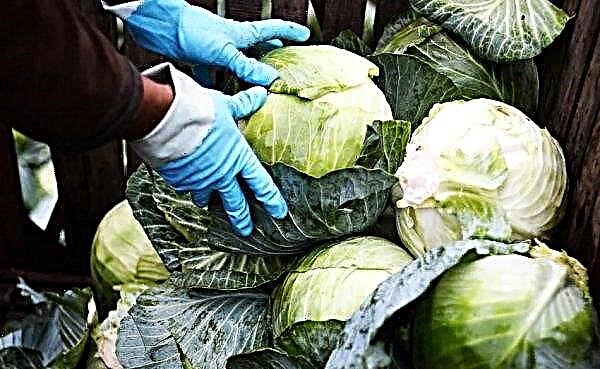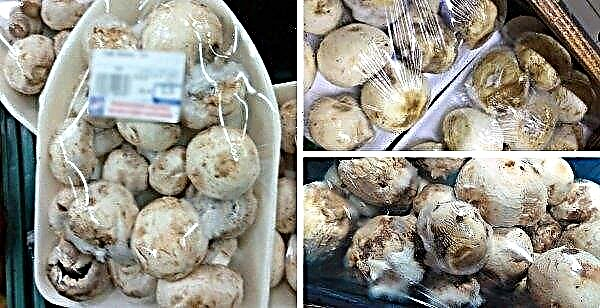The process of sowing carrot seeds, especially on large areas, takes summer residents a lot of time and effort. Therefore, in the agricultural season, the issue of optimizing the labor process becomes more relevant than ever. In this case, a planter for carrots, which is easy to make yourself from improvised materials, will become an indispensable assistant.
What is a carrot planter
The seeder for seeds is a special mechanical device, which, due to design features, makes it possible to quickly and efficiently sow seed material along a predetermined path.
The principle of operation of such a device is quite simple:
- on the front of the unit, blades or special studs are installed with which the necessary size of the furrow will be formed;
- along the width of the seeder, at a certain distance between each other, containers for seed are mounted;
- a hole was made at the bottom of such tanks, through which the right amount of seeds falls out, that is, into the soil;
- a smooth wheel attached to the machine fills the furrows and levels the soil.

- The vegetable seeder has a number of undeniable advantages, which include:
- acceleration of the process of sowing seed material;
- rational consumption of seeds;
- precision sowing, which further simplifies seedling care;
- simplicity and ease of use;
- lack of need to thin out shoots.
By means of the described device, it is possible to process a vast territory in a short period of time.
The main types and advantages of using a seeder for carrots
Today, farmers have access to a wide selection of different planters that differ in size, operating principle, materials, etc. Description of the most common - later in the article.
Did you know? The first planter appeared and was patented in 1566. Its author was the Italian scientist Camillo Torello. Later, in 1701, during the British agrarian revolution, it was finalized by the Englishman Jethro Tall. However, the first seeders were very expensive and unreliable, so they were not widely used..
Hand planter
One of the simplest mechanical devices for large-scale sowing of seeds is a manual sowing machine, which makes it possible to make uniform furrows and evenly “lay” a certain number of seeds in them. A similar unit can be used for sowing grains of carrots, onions, beets, parsley, lettuce, spinach and other small seeds.

A manual planter operates according to the following principle:
- special blades and spikes are mounted on the wheel, which during its movement perform holes of a certain, equal depth;
- a hopper is installed on medium devices where seed material is poured;
- from the bunker there is a so-called “nose”, through which seeds are fed evenly, with strict adjustment by a special valve;
- the rear wheel, in the direction of travel, fills the furrows with soil and tamps the soil.
Some models of hand planters can be equipped with several rows of blades for sowing seeds simultaneously in several furrows. They can also be supplemented by a function to adjust the depth of landing.
Video: Manual planter for carrots and vegetables
Piston seed planter
The piston type of seeders is a structure consisting of a small plastic cylinder-shaped container (cup) intended for laying seed material, and a small piston inside it, equipped with a spring. In this case, the supply of seeds is carried out by pressing the rod and squeezing them “under pressure” of a certain amount.
Important! Most summer residents agree that it is much easier to sow seeds manually than to use a piston-type planter.
- The advantages of a piston installation are:
- the ability to process most of the territory;
- high efficiency when feeding seeds;
- simplicity in operation.
- However, many farmers note a number of disadvantages of the unit:
- uneven "extrusion" of seed material;
- lack of ability to form an even hole;
- the need for further thinning seedlings.

Funnel planter
As a rule, a funnel-shaped planter is rarely used to plant carrot seeds, since it is considered the best option for larger grains. It consists of a funnel cone with a narrow nose through which the seed material enters.
The funnel is placed above the ground, approximately 15 cm, and filled with seeds. Due to weak shaking, the grains are uniformly rolled out along a special groove into the furrow. One of the drawbacks of the seeder is the difficulty in adjusting the number of seed spills, as well as the need for thinning sprouts.
Saucer for bar carrots
With the help of wooden blocks, it is possible to make a practical, convenient and inexpensive seeder in a short time.
To make the unit you need to stock up:
- wood bars, size 5x5x50 cm;
- plastic lids.
Important! With this method of sowing, you must first well fluff and loosen the soil.
Planter design as simple as possible: on the one hand, the covers are screwed along the entire length of the bar with a small interval. At the same time, the distance between the covers is calculated based on the desired interval between future sprouts.
Using such a device is easy:
- level the soil;
- the bar, from the side of the lids, is lowered into the ground, pressed well;
- the bar is lifted from the soil, and in place of the covers in the ground there are even recesses;
- in the made holes dip seed material.
 Seed Marker
Seed Marker
Mini rake for planting seeds
A similar principle of action has a rake for sowing, for the production of which you will need:
- a plank of wood or a board, the width of a land plot;
- wooden block, about 20 cm long;
- jigsaw or hacksaw.
- on one side of the plank, using a jigsaw, cut out a kind of notches, in the form of a trapezoid, which are necessary to create holes;
- on the other hand, in the middle of the board, with the help of nails, mount the handle-bar.
To carry out the sowing of seed material, perform the following steps:
- lower a rake on previously dug up and loose soil;
- carry out the mechanism on the ground, and thus create uniform, of the same depth, grooves;
- seeds are placed in the grooves.
 Homemade rake for planting carrot seeds
Homemade rake for planting carrot seeds
Basic rules and criteria for choosing a finished model
If you can’t make a planter with your own hands, for various reasons, it doesn’t work, you can buy it in any building market. However, when choosing a model, you should pay attention to such aspects.
- Performance. The most efficient devices are those with a trailed operating scheme, since they allow you to process a fairly large area of the land. For sowing in small areas, it is more advisable to use hand-held aggregates.
- Weight. Manual seeders are the lightest, which greatly simplifies the workflow and does not overload the farmer. Trailed devices have the greatest weight, you need to get used to working with them.
- Functionality. Trailer devices have the richest functionality, which can be used not only for sowing seeds, but also for processing, loosening the soil, applying fertilizers, etc. Hand units are considered less functional.
- Adjustment options. Usually, the simplest manual models cannot, in terms of adjusting the furrow depth and row width, compete with automated devices. Trailed planters are equipped with a function for adjusting these parameters, and also make it possible to change the size of the holes of the sowing capacity, which significantly expands the range of seeds sown.
Did you know? The largest planter in the world has a length of 65 m.
Today, manufacturers offer consumers a huge range of seeders that have excellent functionality, practicality and a long service life. Among the models, farmers enjoy the success of precision sowing machines “СОР-1/1”, “1001-В”, “СМК-1”, pneumatic models of Chinese and Polish production, trailed mechanisms made in China, Ukraine, America.
How to make a carrot seeder with your own hands
A carrot planter is an excellent assistant in the agricultural industry, however, if it is not possible to purchase a model from the manufacturer, then it can be made by hand using improvised materials.
Dimensions and Drawings

Before proceeding with the manufacture of the seeder, it is necessary to draw up a drawing and design of the unit.
For self-production, experts recommend choosing the most simple models, drawings of which can be found on the Internet.
Each master can choose the scheme of a homemade seeder at his discretion, however, universal design includes three main components:
- capacity for laying seeds;
- a device that allows you to separate the seed from the total amount;
- the mechanism that covers the seeds with soil.
Materials and tools for work
To make the device, without resorting to large financial and time costs, it is necessary to prepare materials:
- a reservoir of plastic for placement of seed material;
- the axis on which the seed container will be located, for example, a bolt;
- a tube made of aluminum or plastic, the length of the depth of the tank required for the seed;
- a metal pipe of the same size;
- steel wire;
- washers for fixing parts;
- wooden handle, you can take the handle from the shovel;
- steel sheet in the form of a chopper, for raking the soil after sowing seeds.
In the process, you will need tools:
- sharpened knife for cutting plastic;
- measuring instruments: tape measure, level;
- saw for metal and wood.

Step-by-step manufacturing instructions
The manufacturing process of a homemade planter is quite simple:
- A hole is drilled exactly in the center of the tank.
- A hole is made in the lid in the shape of a triangle, necessary for falling asleep of the seed material.
- A valve is made of tin to the size of a triangular hole, and fixed in one of the corners using a screw with a nut.
- A plastic tube is inserted into the hole made in the seed container, which will give strength during the installation of the handle and will prevent the shedding of seeds.
- A piece of steel pipe is inserted into the plastic tube through which a long bolt passes.
- Through the hole on the end side of the wooden handle, the whole mechanism is fixed by laying washers by means of a long screw and nut.
- On one side of the tank mark the points for the holes. The interval between the holes is 30 mm, while its diameter is equal to the diameter of the seeds. Holes are made using a hot nail.
Important! When making holes, it is very important to guess with the size, because too large ones will provoke the loss of a large number of seeds, and too small ones will interfere with their normal loss.
In order to automate the processes of sowing seed material, additional devices can be attached to the structure, for example, a tank for filling planting furrows. To do this, a structure similar to a chopper is made of a sheet of steel and fixed to the handle, slightly above the container in which the planting material is located.
Video: Homemade small seed drill
Basic Terms of Use
One of the main advantages of a homemade seeder is its ease of use. Even a novice farmer will cope with its management:
- Before starting sowing, it is recommended to thoroughly prepare the soil, loosen or dig, moisten.
- Further, by means of a chopper, it is necessary to make furrows of the same length on the bed.
- A manual seeder should be inserted into the furrows and walk through the rows. During movement, seeds will evenly spill out of the container and be distributed over the site.
- In the presence of a steel plate-chopper, which covers the soil with the seeded seed, it is not necessary to pass twice the area.
- If you want to sow larger or smaller seeds, you just need to change the tank to a new one, with holes suitable for a certain size of the seed material.
Saucer for carrots will allow each summer resident to engage in spring sowing work quickly and with pleasure. The described unit has a simple design, easy to manage and operate. And following simple recommendations, you can make a practical and efficient unit with your own hands, without spending a lot of time and money.


